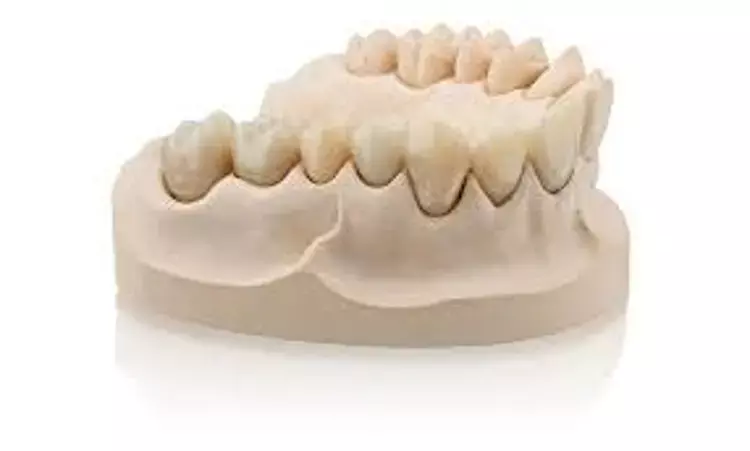- Home
- Medical news & Guidelines
- Anesthesiology
- Cardiology and CTVS
- Critical Care
- Dentistry
- Dermatology
- Diabetes and Endocrinology
- ENT
- Gastroenterology
- Medicine
- Nephrology
- Neurology
- Obstretics-Gynaecology
- Oncology
- Ophthalmology
- Orthopaedics
- Pediatrics-Neonatology
- Psychiatry
- Pulmonology
- Radiology
- Surgery
- Urology
- Laboratory Medicine
- Diet
- Nursing
- Paramedical
- Physiotherapy
- Health news
- Fact Check
- Bone Health Fact Check
- Brain Health Fact Check
- Cancer Related Fact Check
- Child Care Fact Check
- Dental and oral health fact check
- Diabetes and metabolic health fact check
- Diet and Nutrition Fact Check
- Eye and ENT Care Fact Check
- Fitness fact check
- Gut health fact check
- Heart health fact check
- Kidney health fact check
- Medical education fact check
- Men's health fact check
- Respiratory fact check
- Skin and hair care fact check
- Vaccine and Immunization fact check
- Women's health fact check
- AYUSH
- State News
- Andaman and Nicobar Islands
- Andhra Pradesh
- Arunachal Pradesh
- Assam
- Bihar
- Chandigarh
- Chattisgarh
- Dadra and Nagar Haveli
- Daman and Diu
- Delhi
- Goa
- Gujarat
- Haryana
- Himachal Pradesh
- Jammu & Kashmir
- Jharkhand
- Karnataka
- Kerala
- Ladakh
- Lakshadweep
- Madhya Pradesh
- Maharashtra
- Manipur
- Meghalaya
- Mizoram
- Nagaland
- Odisha
- Puducherry
- Punjab
- Rajasthan
- Sikkim
- Tamil Nadu
- Telangana
- Tripura
- Uttar Pradesh
- Uttrakhand
- West Bengal
- Medical Education
- Industry
3-body wear of prefabricated and 3D-printed artificial denture teeth have good functionality

3-body wear of prefabricated and 3D-printed artificial denture teeth have good functionality suggests a recent study published in the International Dental Journal
This study aimed to assess the 3-body wear of prefabricated and 3D-printed artificial denture teeth.
Four groups of artificial teeth were used; 3D-printed polymethylmethacrylate (PMMA) teeth (PR) and 3 prefabricated commercially available denture teeth: PMMA (Gnathostar, GN), PMMA (SR Orthotyp PE, SR), and Nanohybrid composite (SR Phonares NHC, PH). The 3-body wear test was performed using a steatite ceramic antagonist in a chewing simulator with 750,000 cycles, temperature 23 ± 2 ˚C, and force of 50 N. The abrasive medium was composed of ground millet seeds and white rice mixed with distilled water. The teeth were 3D-scanned before and after the wear test. The 3D images were assessed for teeth wear by measuring the volumetric (3D wear) and the vertical (2D wear) substance loss. The one-way analysis of variance followed by Tukey post hoc test was used to statistically obtain the data analysis.
Results
- Maximum 3D wear was observed in the PR (51.05 ± 4.53 mm³), followed by GN (20.22 ± 6.29 mm³) and SR (12.12 ± 6.29 mm³) artificial teeth.
- Minimum wear occurred in the PH teeth (6.24 ± 0.87 mm³).
- The analytical differences amongst the groups were statistically significant (P < .05) except between PH and SR teeth.
- For 2D wear measurement, the maximum was seen in the GN teeth (6.29 ± 1.64 mm), followed by PR (5.04 ± 0.83 mm) and then SR (4.53 ± 0.87 mm).
- The PH teeth (3.09 ± 0.68 mm) again showed minimum wear. Statistically, amongst the groups, the major observable differences (P < .05) were between PH and GN, PH and PR, and SR and GN.
Composite resin teeth had a greater wear resistance than acrylic resin teeth and 3D-printed resin teeth, both of which were comparable. Due to the advancement of digital workflows, manufacturers should devote effort to enhancing 3D-printed teeth.
Reference:
Amna S. Al Saadi, Hatem M. El-Damanhoury, Nadia Khalifa. 2D and 3D Wear Analysis of 3D Printed and Prefabricated Artificial Teeth, International Dental Journal, 2022, ISSN 0020-6539, https://doi.org/10.1016/j.identj.2022.10.002
Dr. Shravani Dali has completed her BDS from Pravara institute of medical sciences, loni. Following which she extensively worked in the healthcare sector for 2+ years. She has been actively involved in writing blogs in field of health and wellness. Currently she is pursuing her Masters of public health-health administration from Tata institute of social sciences. She can be contacted at editorial@medicaldialogues.in.
Dr Kamal Kant Kohli-MBBS, DTCD- a chest specialist with more than 30 years of practice and a flair for writing clinical articles, Dr Kamal Kant Kohli joined Medical Dialogues as a Chief Editor of Medical News. Besides writing articles, as an editor, he proofreads and verifies all the medical content published on Medical Dialogues including those coming from journals, studies,medical conferences,guidelines etc. Email: drkohli@medicaldialogues.in. Contact no. 011-43720751


